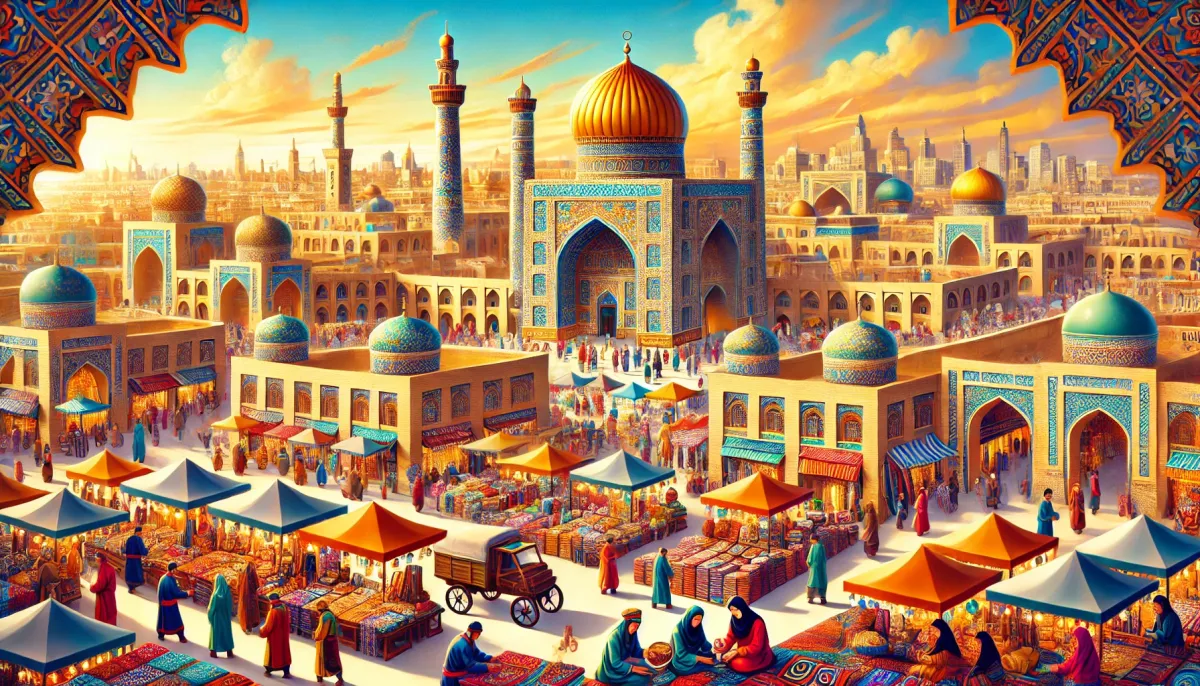Hey everyone, Mark here! I'm an American backpacker with a passion for exploring the hidden gems of Asia. I've spent countless hours wandering through bustling cities, but this time, I decided to ditch the "bucket-list-ticking" style of travel and opted for something slower, something more… authentic. That's how I ended up spending four unforgettable days in Shache County, Xinjiang, a place far removed from the tourist throngs of Kashgar.
From Kashgar's Modernity to Shache's Serene Charm
After nine days in the relatively modern city of Kashgar, I hopped on a train to Shache County, located about 200 kilometers to the east. The train ride itself was an experience. I've spent the past couple of years traveling on budget-friendly green-car trains across China, and this one was no exception – air-conditioned, thankfully, even if it was a bit toasty outside. A local man even took an interest in my camera gear, sparking a quick conversation about photography and filmmaking. The two-hour journey ended in Shache, where the heat hit me like a wall; the temperature was 34°C, but it felt much hotter under the direct sun.
Affordable Accommodation and a Taste of Uyghur Culture
My first hotel room was a basic, budget-friendly single room for just 50 RMB (around $7 USD). While it lacked a private bathroom (and a fan, which I discovered later!), it was clean and affordable. The lack of air conditioning was a real test, though. That first night was brutal; I lay awake for hours in the sweltering heat. I quickly upgraded to a better room for 60 RMB ($8.50 USD), complete with air conditioning, a toilet, towels, and toiletries – the best value I found in all of Xinjiang!
The main draw to Shache for me was the Twelve Muqam, a UNESCO-recognized intangible cultural heritage. This classical Uyghur music form is a blend of music, dance, and storytelling. I managed to catch a performance, and it was absolutely captivating.
Exploring Shache: History, Culture, and Delicious Food
Shache is steeped in history. One of my first stops was the Amani Shah Memorial Mausoleum, dedicated to the wife of the second Khan of the Yarkand Khanate, a celebrated musician and poet. The mausoleum's base is adorned with depictions of musical instruments and inscriptions in Uyghur and Chinese, a testament to the region’s rich cultural heritage. I also visited the Yarkand Khanate Royal Tombs, a fascinating glimpse into the history of this powerful Central Asian kingdom. The tombs, in various shapes and sizes, reflect the architectural styles and beliefs of the time.
I immersed myself in the local culture, savoring a delicious meal of pigeon and turnip noodles (Kabak Gulash) and roast lamb at a popular local eatery. This was one of the best ways I could truly experience the culture, and the food here was delicious. The pigeon was especially memorable – tender and flavorful. I also tried some traditional Uyghur flatbread (nan) filled with rose honey – incredibly sweet and crisp! And let’s not forget the juicy, sweet melon.
Table: My Shache County Budget (USD)
| Item | Cost (USD) |
|---|---|
| First Hotel Room (1 night) | $7 |
| Second Hotel Room (1 night) | $8.50 |
| Pigeon and turnip noodles | $5 |
| Roast Lamb | $6 |
| Nan (Rose Honey) | $1 |
| Various snacks and drinks | $10 |
| Total (Approximate) | $37.50 |
Shache's Everyday Life: A Glimpse into the Heart of Xinjiang
I spent a good deal of time exploring the old city, a vibrant place filled with life and tradition. I visited a local teahouse, where elderly men gathered to sip tea and eat nan throughout the morning, fueled by wood-burning stoves. I also spent time chatting with school children – incredibly open, friendly, and eager to share their dreams and aspirations. The contrast between the ancient and the modern was fascinating, and the people were incredibly warm and welcoming.
I also took a trip to several charming alleyways, each with a unique theme (e.g., Tailor's Alley, Pomegranate Alley, Gold and Silver Alley). The vibrant atmosphere was wonderful and further enhanced my understanding of Xinjiang culture. The final stop of the day was a beautiful and well-maintained mosque.
Shache's Enduring Legacy: A Crossroads of History and Culture
Shache's history stretches back to the Han Dynasty, when it was part of the thirty-six kingdoms of the Western Regions. It later became the capital of the Yarkand Khanate, an important power along the Silk Road. The remnants of this history – including ancient city walls and numerous mausoleums – are still visible today. It's clear Shache has stood as a significant crossroads for centuries. The region's long and complex past continues to shape its present, creating a unique and fascinating destination for travelers.







